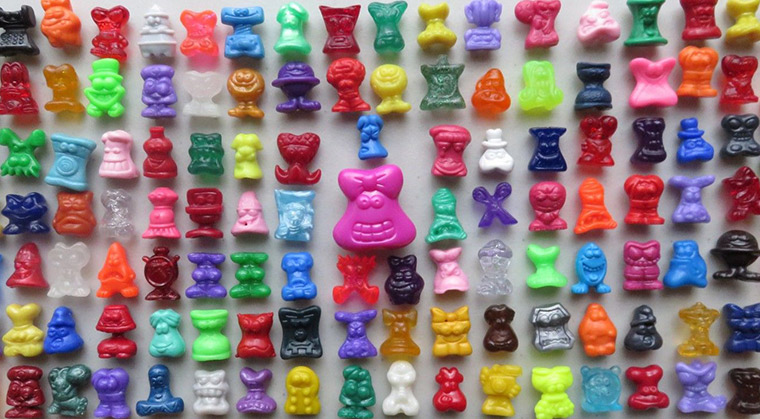The Crazy Bones Craze


Photos: Menachem Kalish
A
Colorful Character Craze
Crazy Bones are tiny, colorful characters that come in hundreds of designs and colors. Crazy Bones were inspired by a game played by children in Ancient Greece. The Greeks used to collect carved knucklebones from sheep and throw them around in a game similar to jacks or marbles. This game was called Astragal, which means knucklebones, and kids all over the world have been playing different versions of it for over 2,000 years (similar to the game of dreidel).
The first Crazy Bones were manufactured in 1996, and became an instant hit. In the late 1990s and early 2000s, collecting Crazy Bones was such a huge trend that more than 31 million packages were sold in just two years. The company was raking in over $17 million each year from these little plastic figurines.
Instead of advertising Crazy Bones in newspapers and magazines or on the radio, the manufacturers found a clever way of arousing interest in their product. They would give away free samples in cereal boxes and at fast food chains. Once kids had one of the plastic figures sitting in the palms of their hands, they quickly started hankering for more. The Crazy Bone fad quieted down for a while, but recently, it has returned, and kids everywhere are once again busy stockpiling, trading and playing with those tiny, vibrant collectibles.
Go Gogos!
There are hundreds of unique Crazy Bone characters, each with its own color, shape, and face. Over the years, various Crazy Bones series have been produced, each with its own set of characters. The characters are also commonly referred to as “gogos.” Each series contains a few “rare” gogos that are sought after by collectors and often sold for prices much higher than their original value. “Gooies” are Crazy Bones that are deformed as a result of a factory error. They are often very much in demand and hard to come by.
Each gogo is designed so that it can be flung using one finger. Ask any kid who is a Crazy Bones expert, and he will tell you that a top quality gogo will gain speed when flung at another gogo, causing it to fall. A strong gogo also has good balance and won’t get knocked down too easily. If you’re not familiar with Crazy Bones, the gogos may all look the same to you. But a Crazy Bone expert can tell which gogos are heavier and stronger than the others.
Since trading and playing with Crazy Bones have caused class disruptions and led to arguments, many schools have outlawed Crazy Bones from their premises. Has your school joined the Crazy Bones ban yet?
(Excerpted from Mishpacha Jr., Issue 729)
Oops! We could not locate your form.







